Heritage in Funchal
As the capital of Madeira, Funchal has a rich heritage, which recounts its history, from the discovery to the present day. Several contrasts are found among the top of the mountains to the grains of sand beaches, traditional and country houses to modern buildings of art.
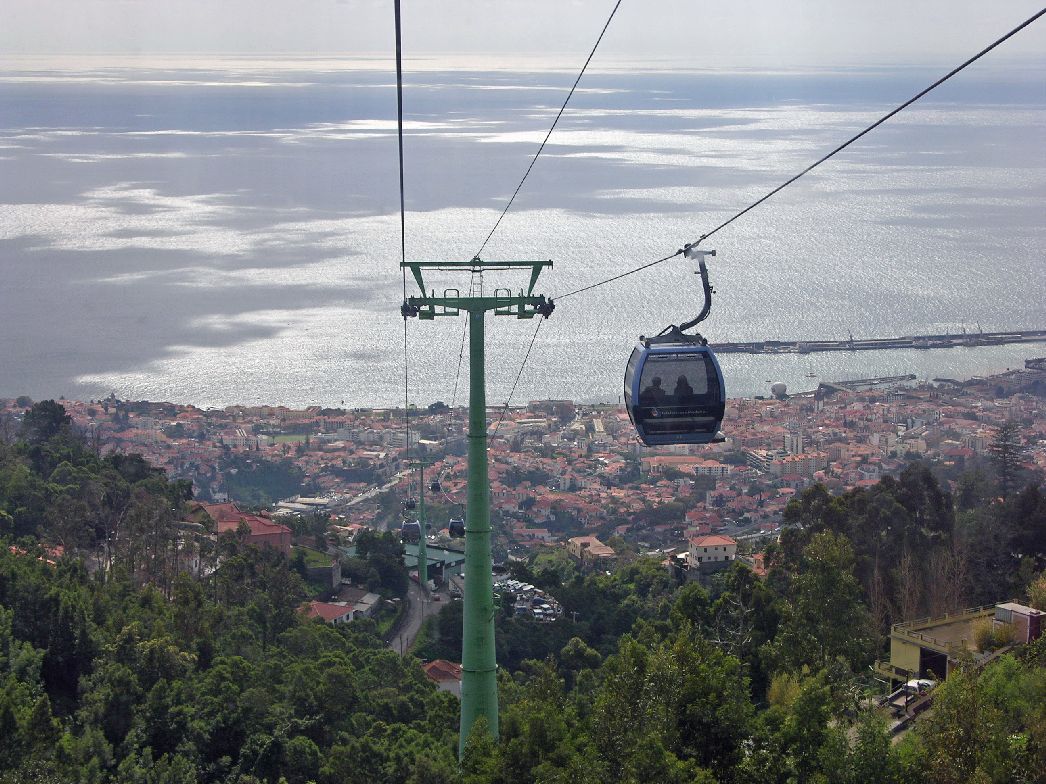
Cable Car Monte – located in the Old Town area, connects Funchal to Monte, just in 15 minutes, offering magnificent panoramic views from the city of Funchal, the more urban side to side of the mountains that surround it. Containing 39 cabins with seven seats each, the cable car takes to know both the Funchal to Monte, ending his trip in the Monte Palace Tropical Garden and Church Hill, where they found the grave of Charles of Hapsburg, the last emperor of Austria. This is open Monday to Sunday from 9:00 to 17:45, ending on 25 December.
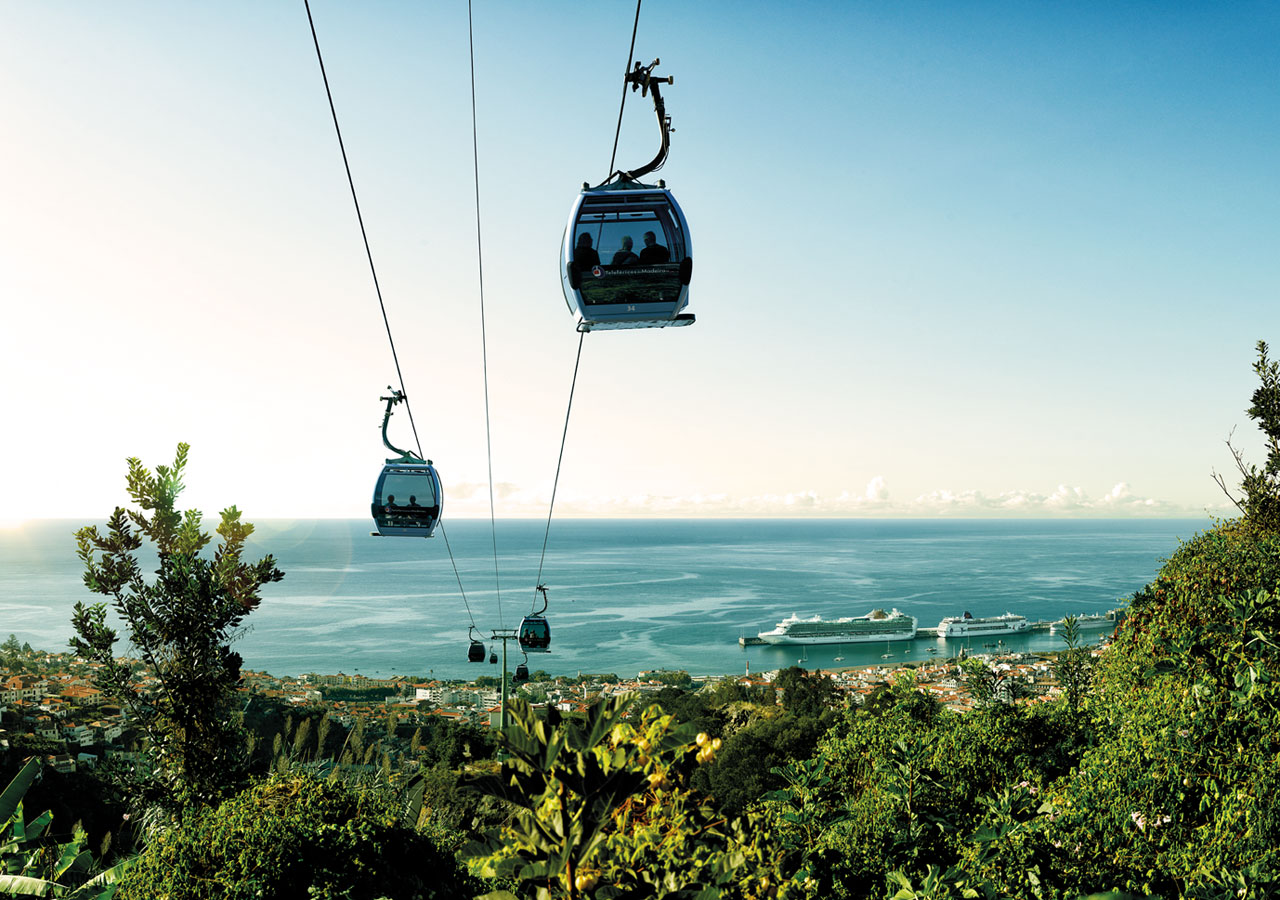
Cable car Botanical Gardens – out of the Botanical Garden, taking only nine minutes to the town of Babosas (Monte), this means of transport offers a panoramic view over the bay of Funchal and the Vale da Ribeira de João Gomes, with its stain forest of Laurisilva. You can also access, through this, the very popular attraction poles, including Tornos, Bom Sucesso and Curral the Pilgrims. With 12 cabins with a capacity of 8 people, it is open from Monday to Sunday from 9:30 to 17:30, ending on 25 December.
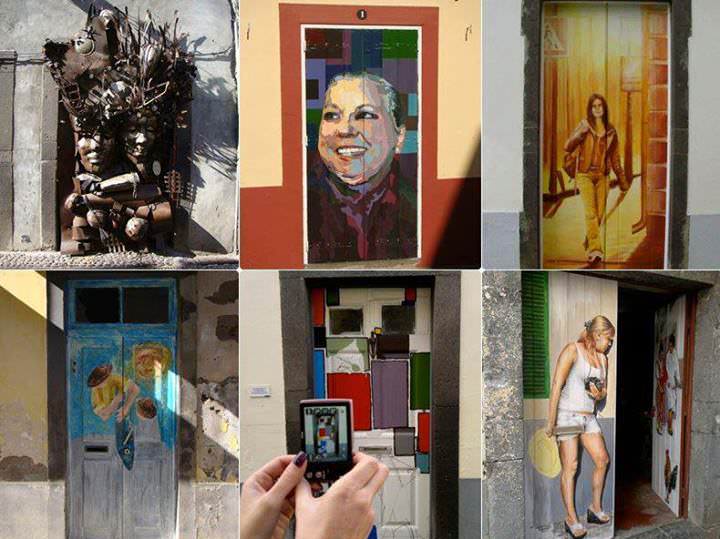
Project “Art of Open Doors” – a project that aims to transform the doors of the streets of the “Old Town” of Funchal, art screens. An action that arose from a partnership of José Maria Zyberchema with João Carlos Abreu, a former Regional Secretary for Tourism and Culture, the City Hall of Funchal and two private companies, which aims to revitalize the social and cultural promotion of this neighborhood, making If an art gallery, made by the creativity of local artists and artisans. Noteworthy is Paul David architect and interior designer and Commandeur, Nini Andrade Silva, as Madeiran artists who were associated with this action.
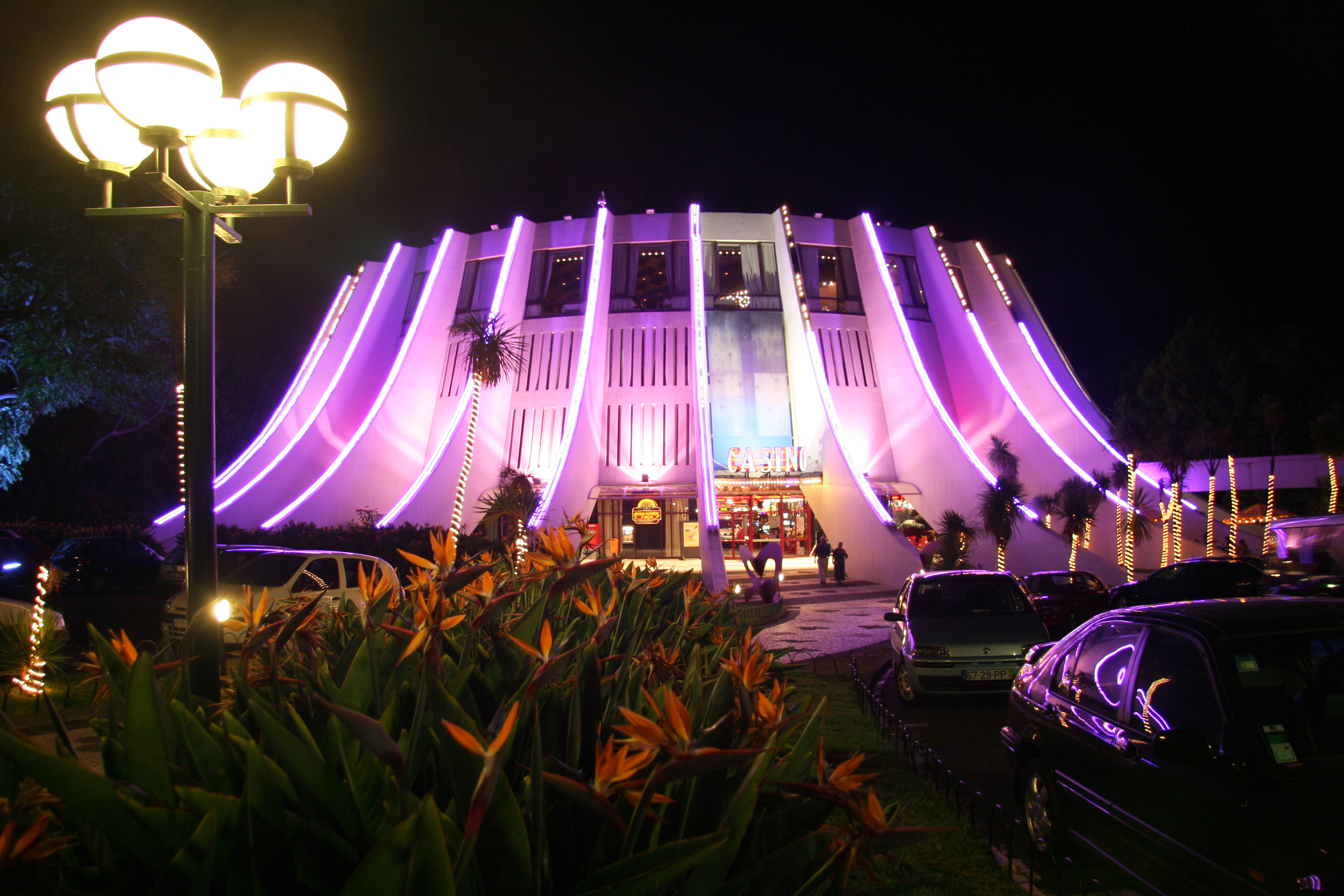
Madeira Casino – Entertainment center, which connects the leisure entertainment, with games rooms with a range of Roulette, Poker, Keno, Black Jack / 21 and games “video rolls”, but also offers the “Palm Bar” , a disco “Copacabana”, the “Restaurant Bahia” and “River Restaurant”. Being open Sunday through Thursday from 15:00 to 3:00 a.m., Friday, Saturday and holiday eves 16h00 04h00, ending the 24th and 25th of December.
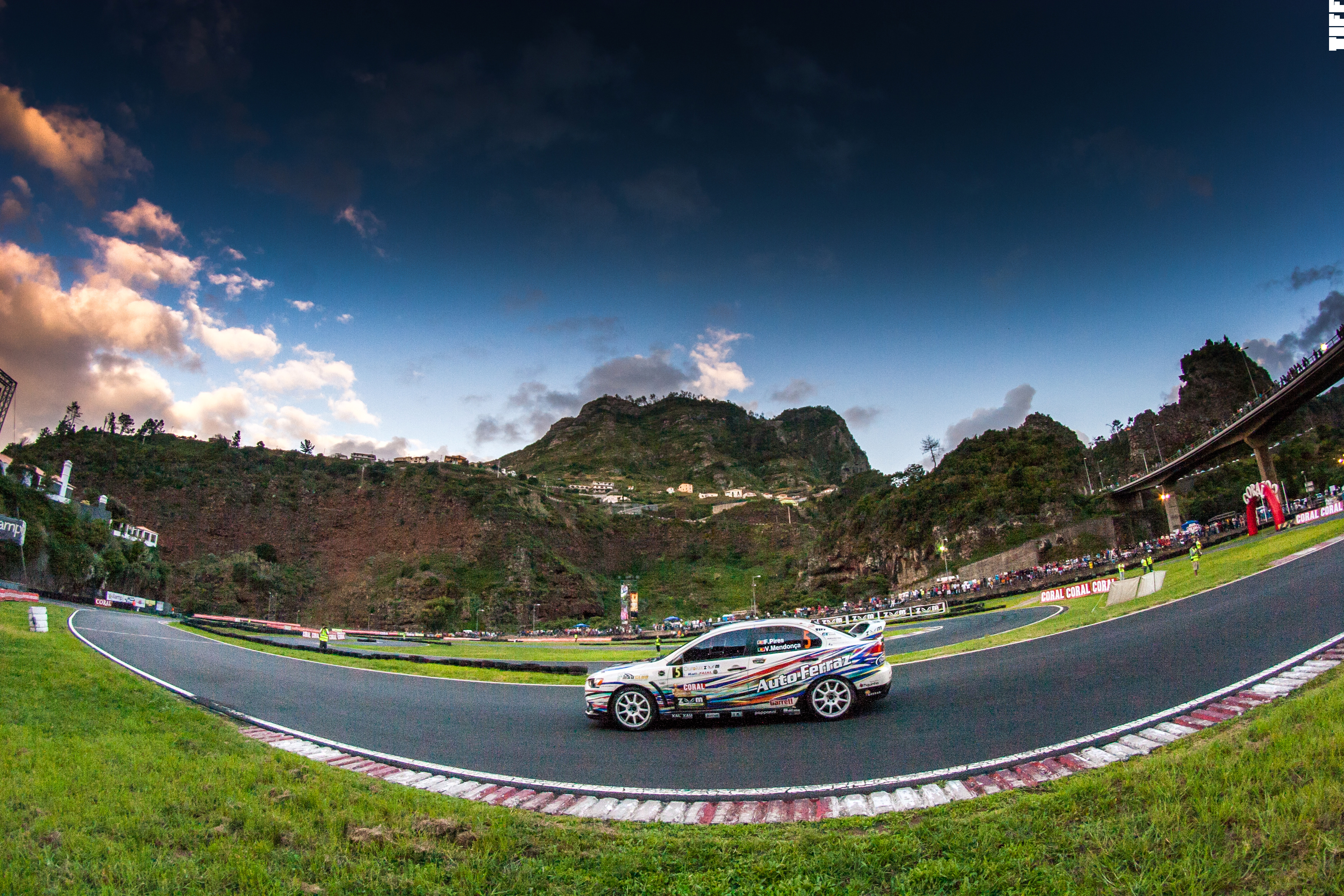
Faial kart track – with a runway 1040 meters, accompanied by technical areas, lines and curves, which have pure adrenaline moments as the landscape becomes the companion of adventure and emotions. In addition to host official competitions also can host private events, friendly, fun times with friends and family.
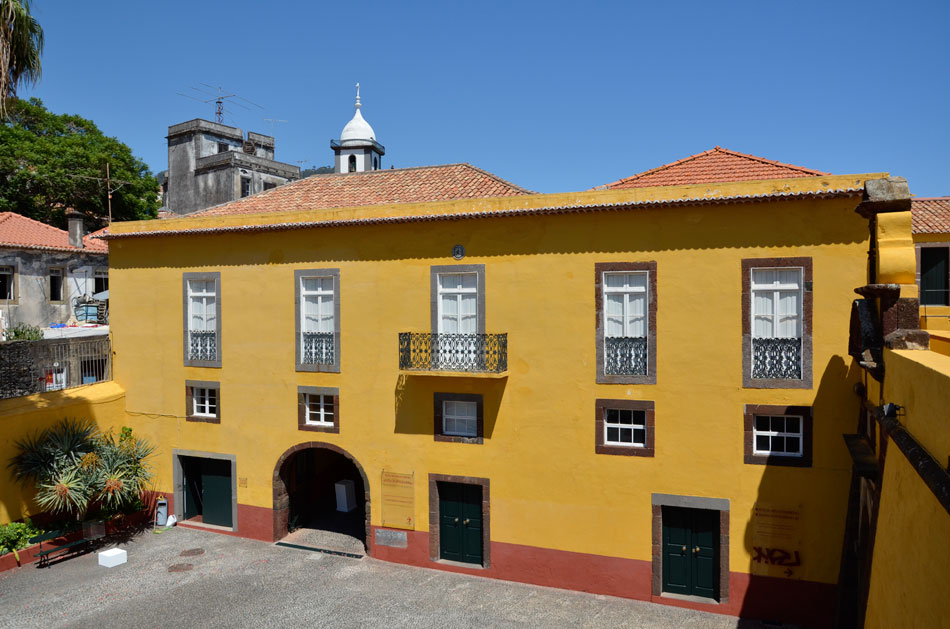
Museum of Contemporary Art – in Fort St. James, this museum offers a diverse collection of contemporary Portuguese art from the 60s to the present day. This fortification was sent rise in 1614 and was the first phase of works completed in 1637, during the reign of King Philip II of Portugal third in Spain. In the eighteenth century, it follows the second campaign work, under order of the Governor José Correia de Sá. In the nineteenth century, this fortress served as a barracks for British troops, and is currently the Museum of Contemporary Art, containing an initial core with the collection of the Fine Arts Prize of the City of Funchal, an initiative which took place between 1966 and 1967. This also It contains a collection of works by artists who developed their activity in Madeira, as Élia Pimenta, Celso Caires, Isabel Santa Clara, Eduardo de Freitas, berimbau Grace, Teresa Garden, Filipa Venancio, among many others. The museum is open Monday to Saturday from 10h00 to 12h30 and from 14h00 to 17h30 and closed Sundays and holidays.
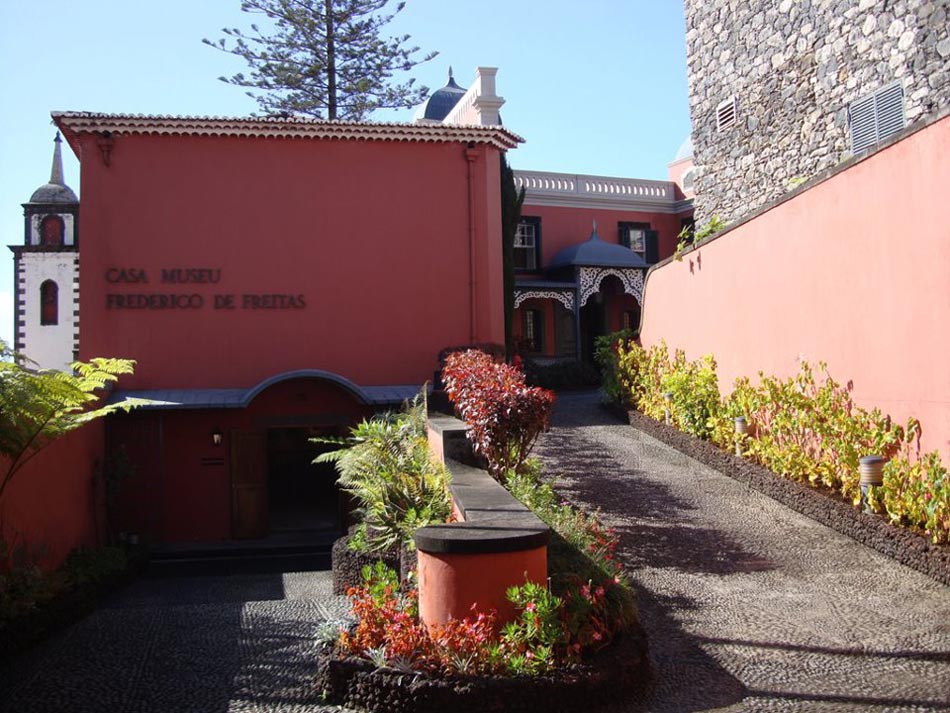
Casa Frederico de Freitas Museum – have secular collections of sculpture, painting, engraving, furniture, ceramics and crystals lawyer, notary and collector Madeiran Dr. Frederico de Freitas. With its red color, this appealing space is distinguished on the Walk of Santa Clara and is an essential element in the urban civil architecture of the historic district of St. Peter and the center of Funchal. This house is also recognized by Casa da Calçada, the former residence of the Counts of Calçada. Currently it contains art collections dating from the seventeenth and nineteenth centuries, between religious theme, containing European sculpture and painting parts, Mug Collection offers other types of the eighteenth century to the present. This museum was completed in 1999, together with the House of Tiles, which houses the eclectic and the collection of tiles with oriental, Islamic, medieval, majolica and an exhibition of Dutch tile pieces. This house museum is open Tuesday to Saturday from 10h00 to 12h30 and from 14h00 to 17h30, ending Sunday, the 2nd-show and holidays.
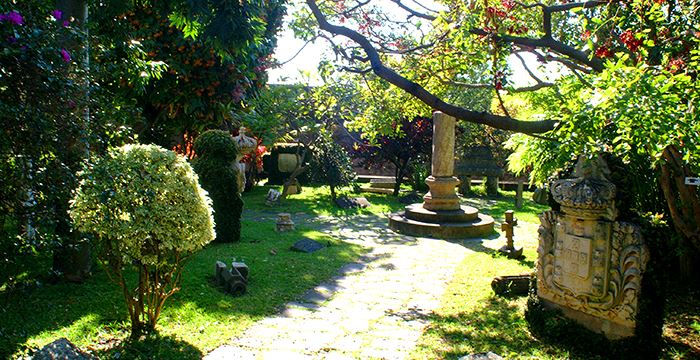
Quinta das Cruzes Museum – one of the houses with a great tradition in Funchal, with a collection of Portuguese and foreign furniture, jewelery, ceramics, sculpture and pieces of jewelery. This farm is linked to the family of the first grantees captains here chose his second home, and this remained the House until the seventeenth century family, then moving to the Lomelino family until the end of the nineteenth century. Over the centuries this property has changed in the eighteenth century became the flagship Madeiran Quinta, opening to the public in 1953 with an initial collection of decorative arts of César Filipe Gomes, Madeiran collector. This farm is made up of the former residence of Morgados das Cruzes, the Chapel of Our Lady of Mercy and the beautiful garden, which is composed of the Orchid and the Archaeological Park. Thursday stands out English influence real estate pieces, such as “Chippendale”, Hepplewhite and Sheraton, as the Portuguese real estate pieces designation “sugar box”, from Brazilian exotic woods, during the great sugar production Madeiran . The second core features is divided into European and Oriental porcelain, highlighting Meissen, Saxony, Limoges, Bristol, Davenport Vista Alegre; and pieces “of the Indies Company” Qing Dynasty, respectively. Among other exhibits, this is open Tuesday to Sunday from 10h00 to 12h30 and from 14h00 to 17h30 and closed on Mondays and holidays.
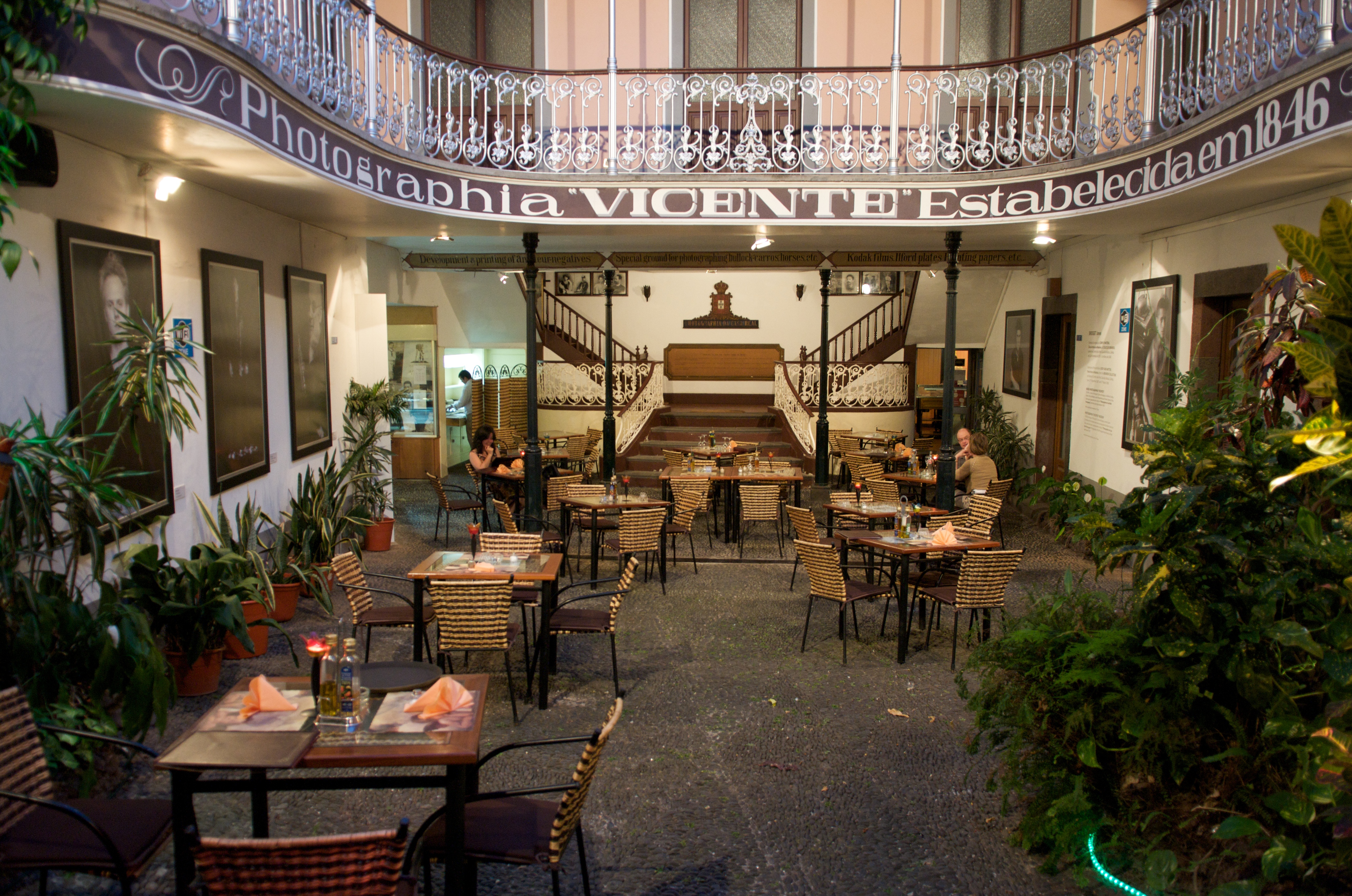
Photographia – Museum “Vicentes” – is the oldest photography studio in Portugal, this hosts a varied estate consists of scenarios, cameras and photographic archive, comprising 400,000 negatives. This is the current “Vicentes” Museum, which itself consists of the former home and studio of Vicente Gomes da Silva, the pioneer of photography in Portugal and founded this studio 1848 and was transformed into the current museum. This offers a full space scenarios, cameras, technical books of photographs, studio furniture, with the negative of Vicentes collection, dated between 1870 and 1978, this space becomes so a rich historical source of Madeira. It is open Monday to Friday from 10h00 to 12h30 and from 14h00 to 17h30 and closed on Saturdays, Sundays and holidays.
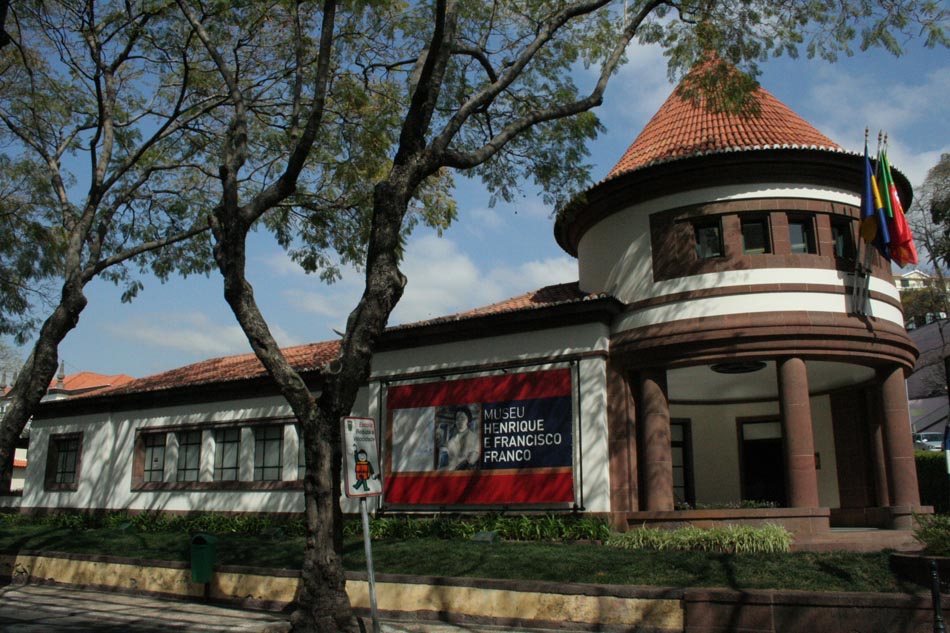
Museum Henrique and Francisco Franco – dedicated to the study, presentation, conservation and promotion of artistic works of Madeiran artists and brothers Henrique and Francisco Franco, housing a large collection of his works from his youth to adulthood. While the paint shed, presents Henrique Franco, with oil paintings, drawings, prints and small fresh; the level sculpture, presents Francisco Franco, with his sculptures, drawings and prints. This space offers an educational service focused to promote the collection and its artists, increasing taste for art and heritage awareness. It is open Monday to Friday from 10.00 to 18.00 and closed on Saturdays, Sundays and holidays.
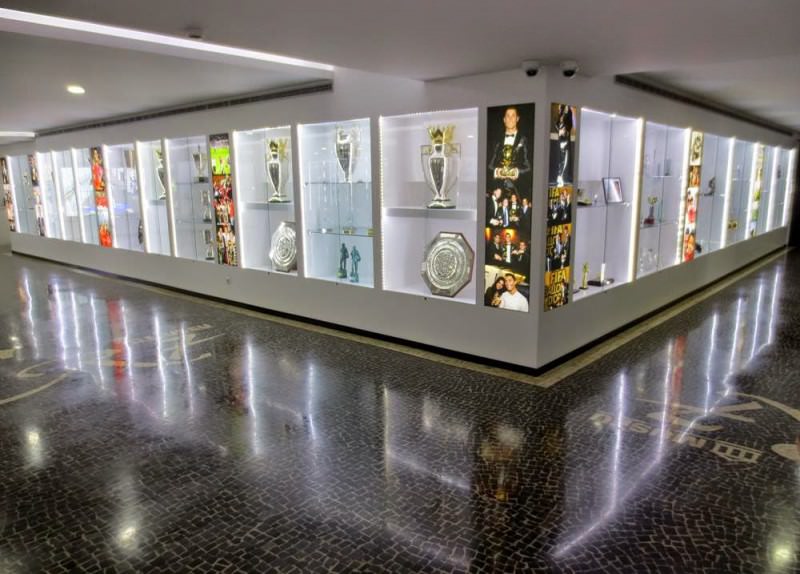
CR7 Museum – presents the history of Madeiran player Cristiano Ronaldo, sporting their trophies won throughout his career, from 126 individual trophies as collective service of its teams, along with several iconic photographs of his career, videos and a statue of wax. This is open Monday to Saturday from 10.00 to 18.00, closing on Sunday and 25 December.
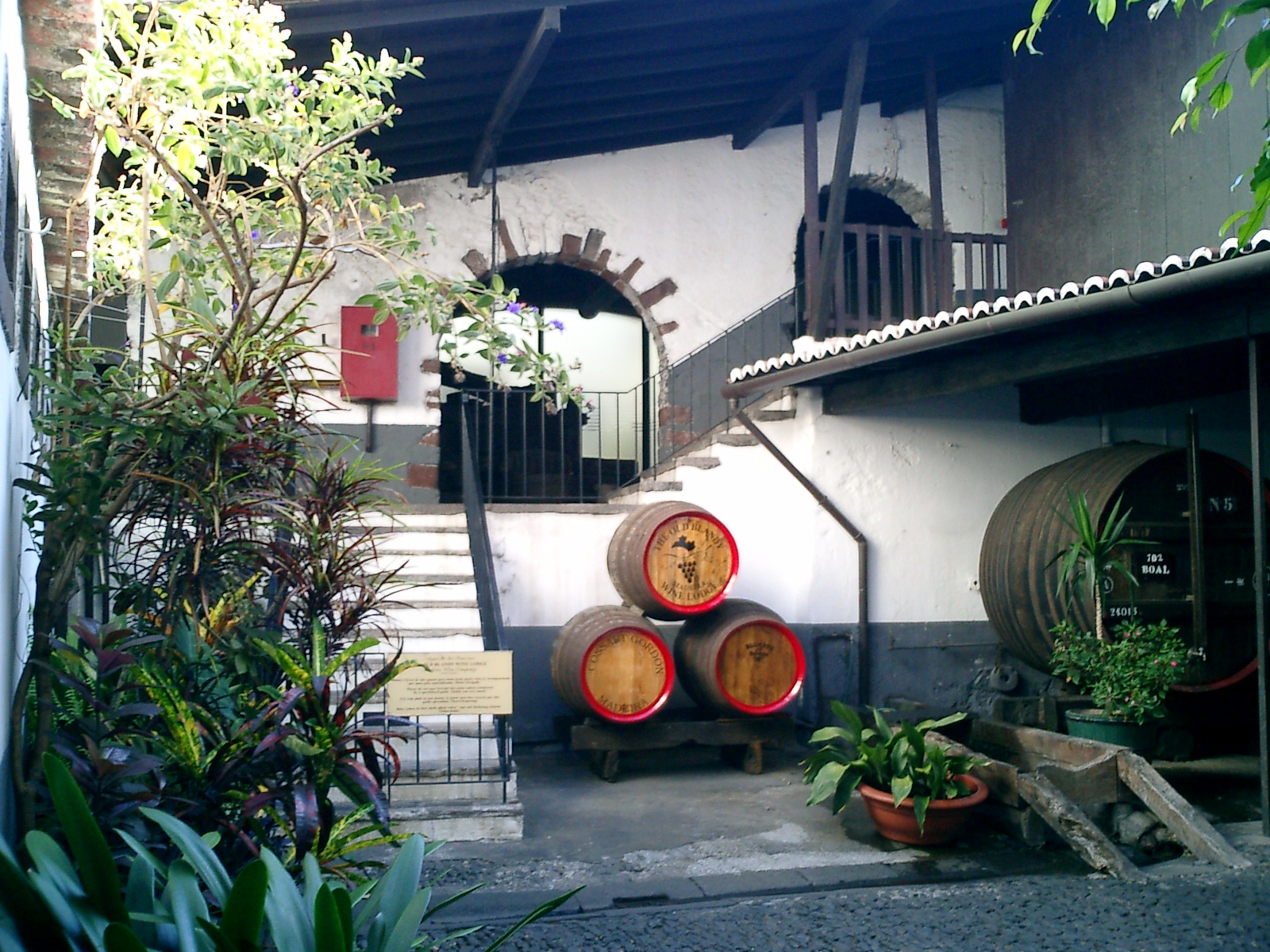
Wineries San Francisco – or Madeira Wine Museum – is a set of Baroque civil architecture buildings with the oldest wine cellars of Madeira, dating back to the seventeenth and eighteenth century. This presents the history of Madeira Wine, where its visitors can enjoy a proof of this wine. This space is in the old Convent of San Francisco of Funchal, which was demolished in the nineteenth century and currently have a space that welcomes, in addition to its architecture, rooms proof, shops, warehouses and an exhibition area, all for tell the history of Madeira Wine, counting the production process to the transformation of their caste, Sercial, Malvasia, Verdelho and Boal, creating the Madeira Wine. Madeira Wine Company was founded in 1913 in a merger of independent producers. It is open Monday to Friday from 10h00 to 18h00 and Saturday from 10h00 to 13h00 and closed on Sundays and holidays.
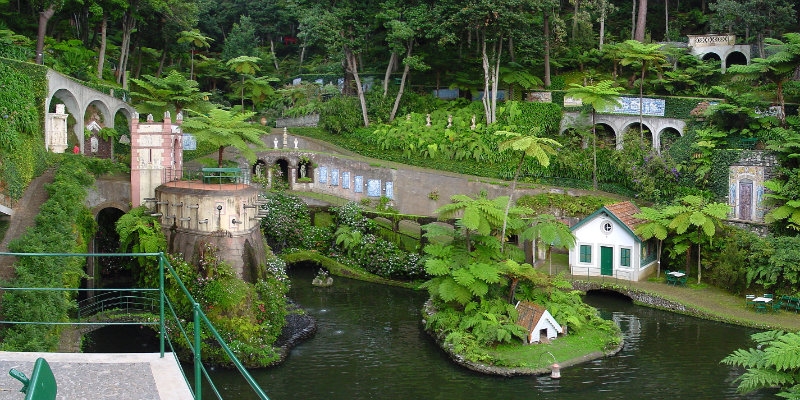
Museum Monte Palace – the Monte Palace Tropical Garden, it hosts two collections, one of minerals and the other of contemporary Zimbabwean sculpture. In the mid-eighteenth century, the English consul, Charles Murray acquired a property, which was south of Mount church, which transformed a farm, the “Quinta do Prazer”. In 1897, Alfredo Guilherme Rodrigues bought this farm and inspired by the castles of the Rhine river, raised a residence with characteristics of a palace, and later adapted to a hotel, the “Monte Palace Hotel”, which this time was quite frequented by people of national and international elite. With the death of Alfredo Guilherme Rodrigues, in 1943, the hotel closed, then going to the financial institution “Caixa Económica do Funchal,” which in 1987 sold it to the entrepreneur José Manuel Rodrigues Berardo, and later donated to his foundation, being born so the Monte Palace Tropical Garden. Over time, this garden has been enriched with endemic exotic plants from many countries, including cycads and proteas of South Africa, azaleas from Belgium, Scotland heathers, and especially plants wood Florentine Laurel, which together with the lagoons also enriched with Koi fish, provide natural color variety to the space, which is decorated with niches, pagodas, buddhas, lanterns, sculptures of different cultures, a tiling collection, consisting of 166 terracotta glazed tiles, called “The Adventure of Portuguese in Japan “along with a set of 40 panels that tell the history of Portugal. This is open Monday to Sunday from 10h00 to 16h30 and ends December 25.
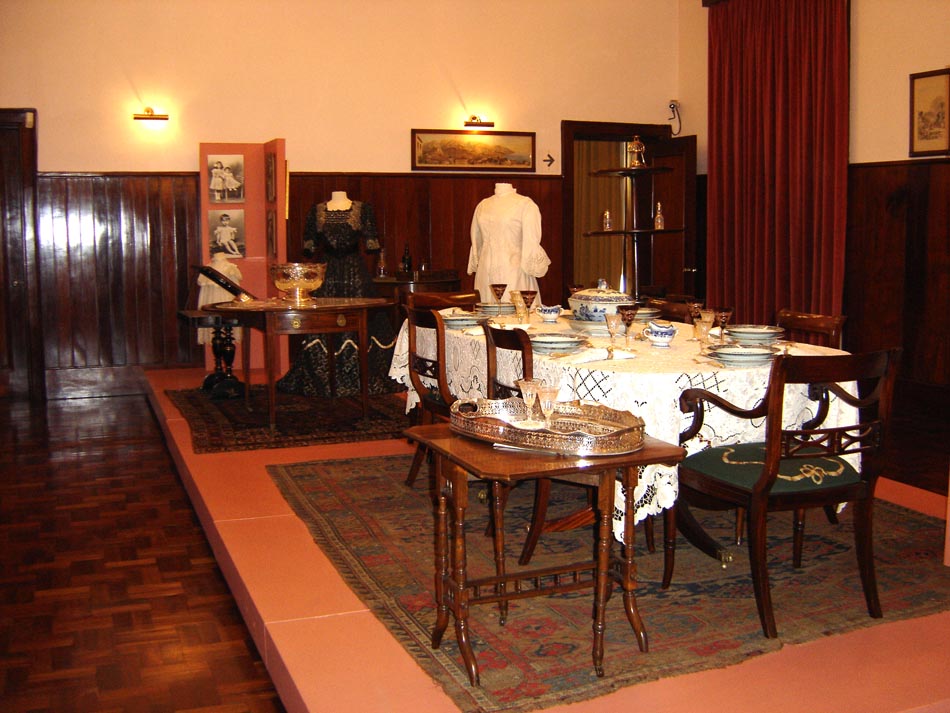
Museum Embroidery and Crafts – dedicated to the history and culture of embroidery, this recreates an environment of a Madeiran home, honoring the secular art through the presentation of works produced over 150 years, that attest to the beauty and refinement of art Embroidery of Madeira. This mainly aims to demonstrate the influence of secular art in the economic aspect, culture and Madeiran social life that is lived from the second half of the nineteenth century and early twentieth century. This is open Monday to Friday from 9.30 to 12.30 and from 14.00 to 17.30, closing on Saturdays, Sundays and holidays.

Museum of Sacred Art – is a sixteenth-century palace that was once the residence of the bishops of Funchal. This museum is one of the oldest museums of Funchal and one of the best preserved well, with painting collections, sculpture, jewelery and vestments, dating from the period of the fifteenth and nineteenth centuries, it highlights two main groups, the Flemish Art, and composed of painting, sculpture, highlighting the Malines and Antwerp, and goldsmiths, the period between the end of the fifteenth century and the early years of the sixteenth century; and the other refers to the Portuguese art, dating from the fifteenth century and the eighteenth century. This museum is open Tuesday to Saturday from 10h00 to 12h30 and from 14h30 to 18h00 and Sunday from 10h00 to 13h00 and closed Monday and holidays.
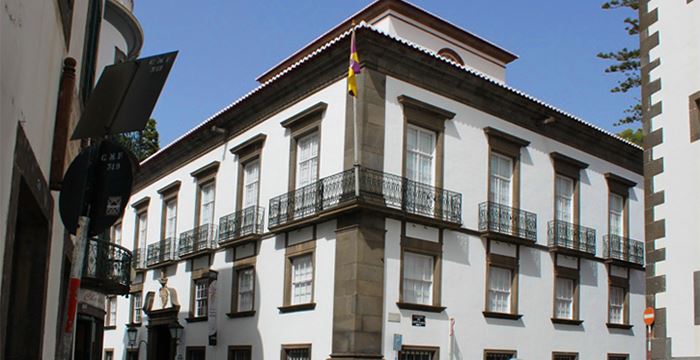
Natural History Museum of Funchal – created in 1929 and opened in 1933 by the city of Funchal, this is one of the oldest operating museums in Madeira, housing more than 41,000 specimens of species of fish, birds, land mammals and marine , marine reptiles, insects and other plants and a collection of rocks and minerals of the archipelago and marine fossils of Porto Santo. Is the Palace of St. Peter, one of the Portuguese civil architecture works most significant of the eighteenth century, having been sent raise the Carvalhal family and in 1929 was acquired by the city of Funchal and was then installed the Municipal Library of Funchal, the Madeira Regional Museum and the Madeira Regional Archives. Today only does the Natural History Museum of Funchal, its Scientific Library and the Municipal Aquarium. Already on the ground floor of this is the Municipal Aquarium with 15 tanks exhibition, being important marine fauna elements of the coastline of Madeira; already Aromatic Plants Garden and Medicinal, also part of this space, features dozens of medicinal and aromatic plants, indigenous plants and endemic of the archipelago of Madeira. This space is open Tuesday to Friday from 10h00 to 18h00 and Sundays and holidays from 12h00 to 18h00 and closed Monday and holidays from January 1, Tuesday carnival, Easter Sunday, 1 May, 21 August and 25 and 26 December.
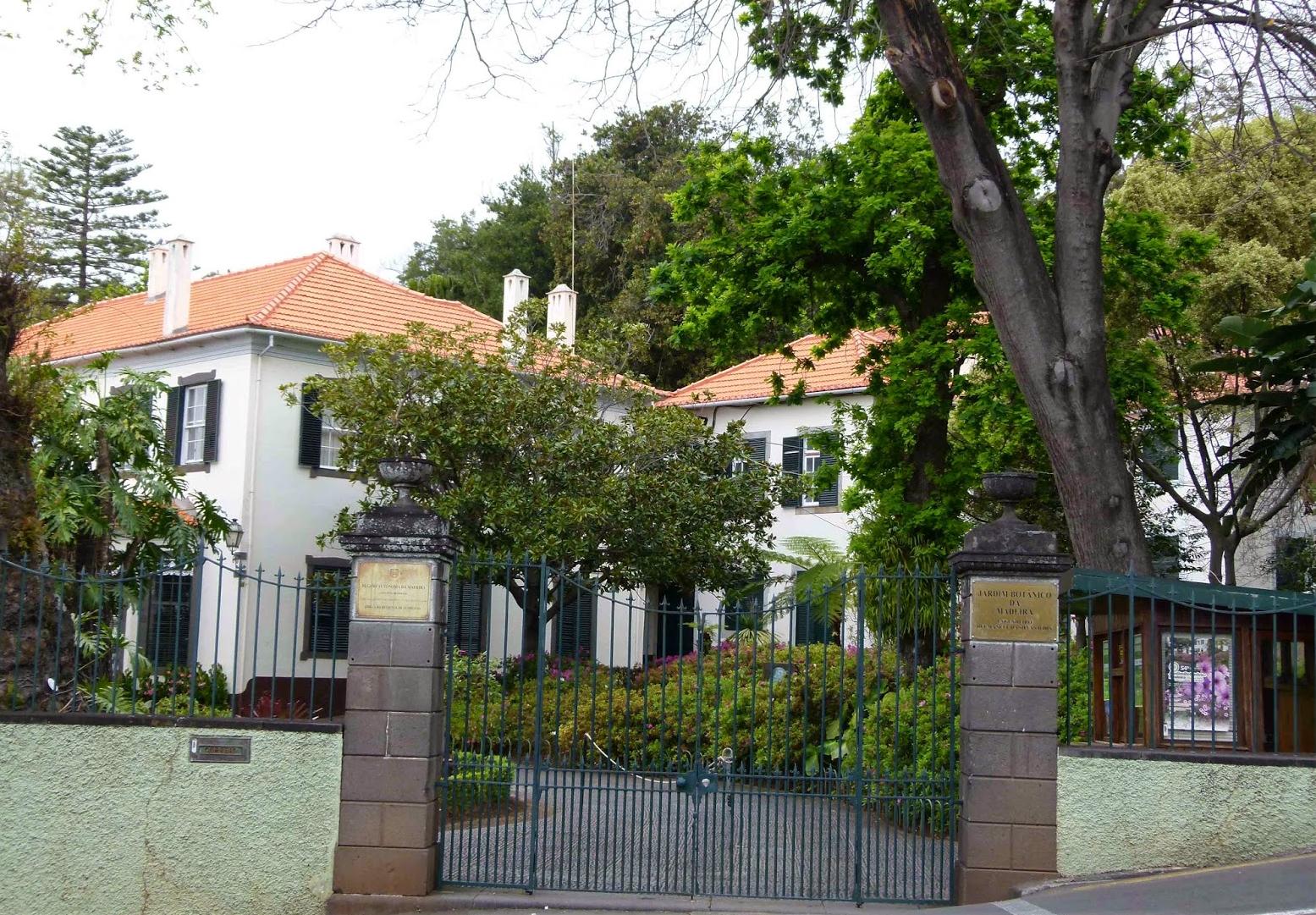
Natural History Museum – in the Madeira Botanical Garden, this presents a valuable collection of natural heritage of the archipelago. Ernest Schmitz, a Catholic priest and naturalist, moved to the island of Madeira in 1874, interested in the natural diversity of this organized a Natural History office in Funchal Seminary in 1882, which in the future would be the current museum. This museum houses rocks collections, corals, fossils, both vascular plants and as avascular, lichens, stuffed animals, as residents, migratory birds, mammals, fish and reptiles, and other preserved in formalin, and later joined them collections of Bryophytes and phanerogams, arranged by the English naturalist James Yate Johnson, and collections of lichens and fungi, the priest Jaime de Gouveia Barreto. In 1981, the main building of the Botanical Garden of Madeira receives the estate of the former Diocesan Museum of Funchal, by Father Manuel de Nobrega, containing large collections of birds, fossils, rocks, minerals, invertebrates and vertebrates and spent a year the Botanical Garden took possession of these collections, which are presented together with those earlier. The Natural History Museum is open, Monday to Sunday from 9h00 to 18h00 and ends December 25.
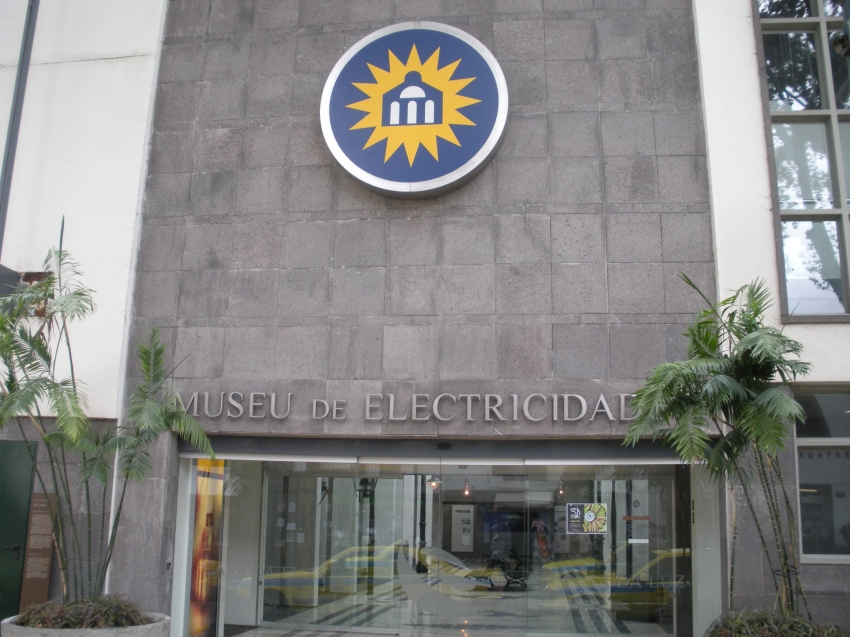
Museu da Eletricidade “Casa da Luz” – no mesmo local que albergara a Central Térmica do Funchal, este museu apresenta um espólio de modelos de máquinas raras e aparelhos com mais de um século de vida. As instalações da Central Térmica do Funchal remontam a 1870, quando a primeira concessionária “Madeira Electric Lighting Company Limited” foi desativada em 1989, acolhendo então este museu. A sua primeira área de exposição, denomina-se “Luzes do Funchal”, acolhendo diversos tipos de iluminação utilizados na cidade do Funchal e respetivo mobiliário urbano, como os primeiros exemplares de lamparinas de azeite percorrendo até aos candeeiros da atualidade; já a segunda área tem o título de “Um Século de Eletricidade” visa demonstrar o historial evolutivo da eletrificação da Madeira, contando com presença de diversas máquinas e as duas formas de produção de energia elétrica, a térmica e a hidráulica; ainda neste encontra-se a “Segunda Nave” que contempla a exposição de um posto de transformação e respetiva ligação a um poste de eletricidade. Já a terceira área, apresenta-se pela ciência e tecnologia, com equipamentos interativos e software, com computadores com capacete de realidade virtual, bola de plasma -a gaiola de Faraday, fibra ótica e quiosque de multimédia. Este museu encontra-se aberto de terça-feira a sábado das 10h00 às 12h30 e das 14h00 às 18h00, encerrando segunda-feira, domingo e feriados.
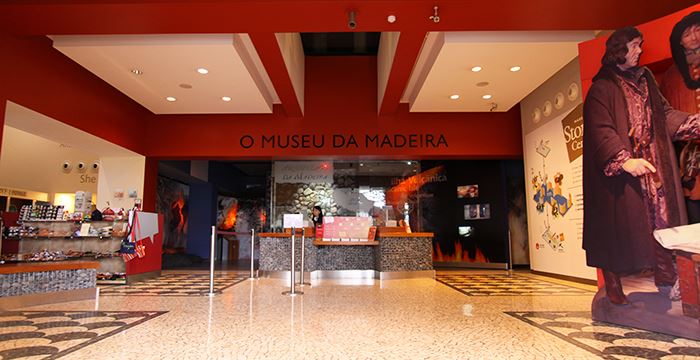
Madeira Story Centre – in the old part of Funchal, this shows an overview of 14 million years of Madeira’s history, counting from its geological formation to the present day, including recreations of history, authentic historical objects, along with audio-visual equipment interactive, formulate a historically unique experience, where you can explore the themes of: the Origins Volcanic; Legends of the Discovery; Discovery of Madeira; Turmoil and Trade; Strategic Island; Development of Madeira; After the navigation; Explore Madeira. This is open Monday to Sunday from 10h00 to 18h00 and ends December 25.
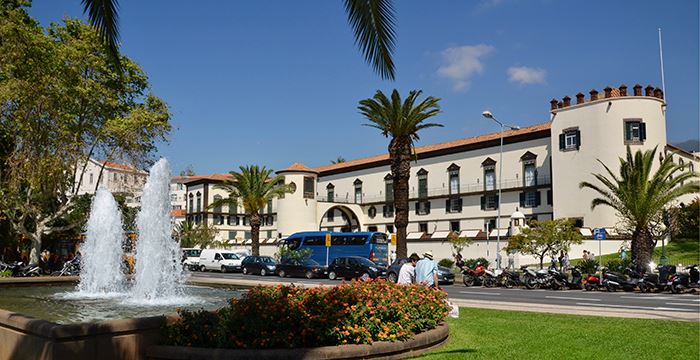
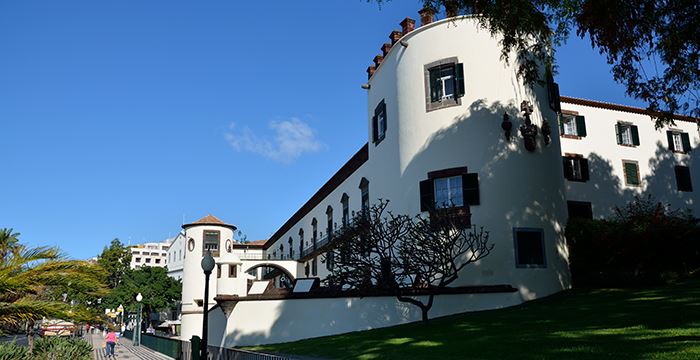
Palace of São Lourenço – with a military architecture, Manueline and Mannerist, this has changed over the centuries and years, becoming gradually a national palace. Also known as Fortaleza de São Lourenço, this monument of historical reference and Madeira archipelago policy. In Filipino time, they were built three strongholds north and maintaining its yellow Manueline tower east, atulamente this serves as residence of the Representative of the Republic and the seat of the Headquarters of the Military Zone of Madeira. Monday is open from 13h00, Tuesday and Wednesday from 10.00, Thursday from 10h00 to 13h00 and Friday from 15:00, ending Saturday, Sunday and holiday.
Museum Centre of São Lourenço Palace – is a fifteenth-century fortress built by King Manuel I, King of Portugal in 1513. The title of “São Lourenço Palace” comes from a set of fortress and palace, was the residence of the Captains Grantees of Funchal to the Philippine period, and the Castilian headquarters until 1640 and then residence Captains General Governors, to the implementation of constitutional government in the year 1834, a year later, the archipelago of Madeira is now managed by Civil Governors. Having been classified as a National Monument in 1943. Currently, this presents a set of decorative, Portuguese and European art, from the ancient palace and transfers of national palaces of the seventeenth, eighteenth and nineteenth centuries, also joins the royal portrait gallery , which highlights the portrait of King John VI, painted by Joaquim Leonardo da Rocha. This is open on Monday from 13h00, Tuesday and Wednesday from 10.00, Thursday from 10h00 to 13h00 and Friday from 15:00 and closed on Saturdays, Sundays and holidays.
Military Wood Museum – home to several collections of weapons from the eighteenth century to the present day, with old bronze artillery pieces and a collection of light weapons, with the evolution of the construction of the St. Lawrence fortress, where it is installed. In 1836, an administrative division of the military and civil powers caused the division of physical Palace area, in the eastern area is under the supervision of the Command of the Military Zone of Madeira, with an exhibition on the history and development of this fortress, accompanying with iconography representative of the history of the Portuguese Army in Madeira. This is open from Tuesday to Friday from 10h00 to 12h00 and from 14h00 to 17h00, closing on weekends weekend, Monday and holidays.
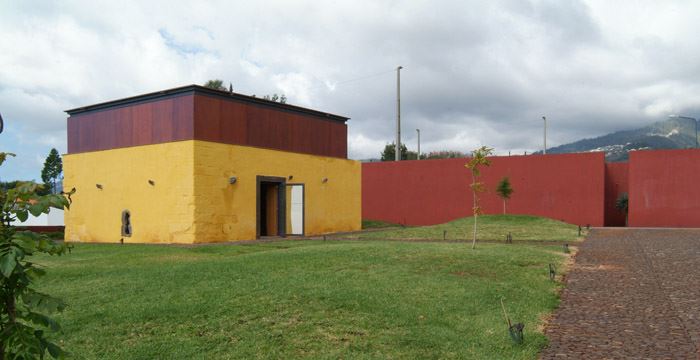
Santo Amaro History Center – Captain Tower – formed by the Captain’s Tower, the Chapel of Santo Amaro and the House of Pilgrims, these buildings of the fifteenth and seventeenth century, is still in the design phase.
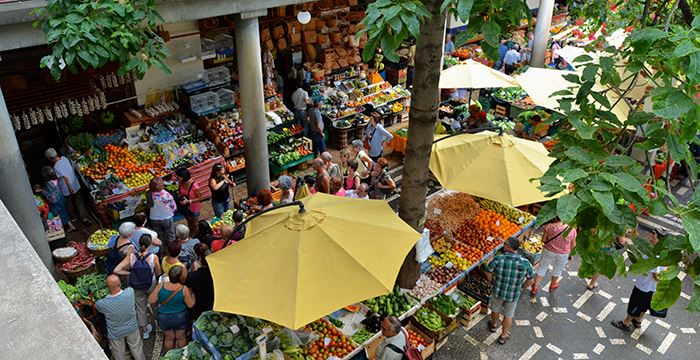
Farmers market – opened in 1940, hosts a new State architecture, a hubbub atmosphere and lively, the Edmundo Tavares authored that was to make the space a pole supplying the city with Batisttini Faience tiles panels of Maria de Portugal 1940 and painted with regional themes by João Rodrigues that adorn the facade, the main door and fishmonger. Currently, this still performs his duties and is open on Monday and Thursday from 08h00 to 19h00, Friday from 07h00 to 20h00 and Saturday from 07.00 to 14.00, closing on Sundays and holidays.
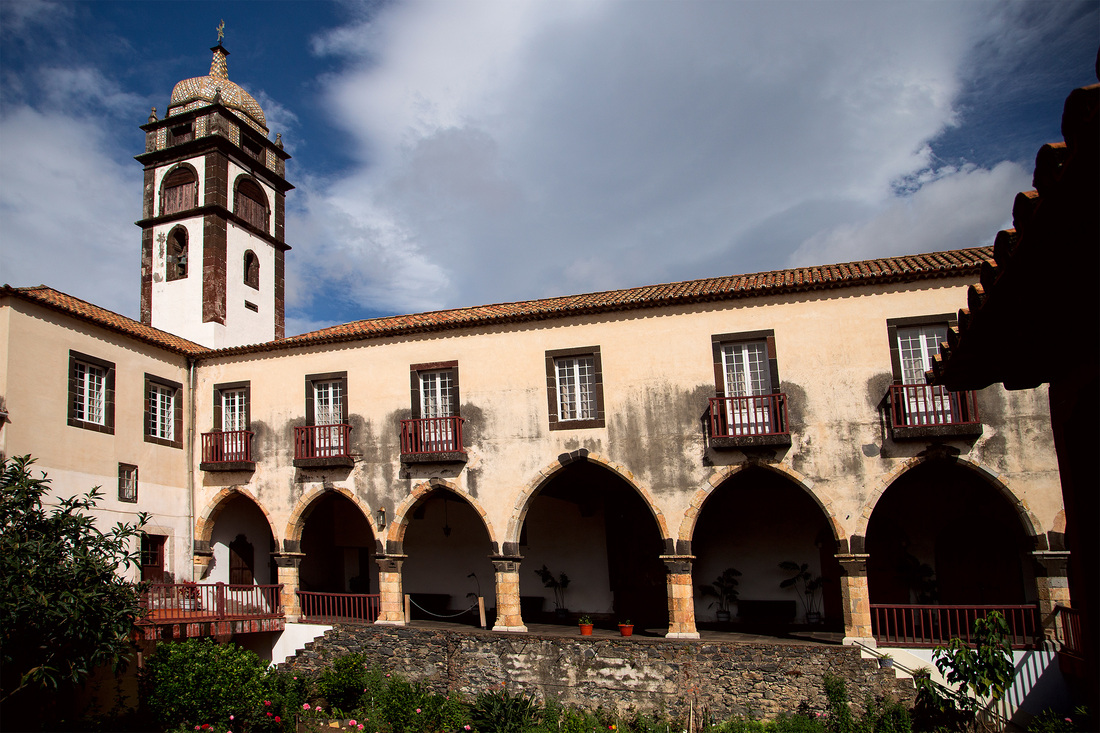
Convent of Santa Clara – mand rise between 1489 and 1496, per second captain donee of Madeira, João Gonçalves da Câmara, in the vicinity of his father’s residence, this presents tiles seventeenth century wooden ceilings and style tiles Hispanic-Arab and a collection of restored paintings of the seventeenth and eighteenth centuries. This consists of a very valuable asset for presents Religious Franciscan Convent. It is open Monday to Saturday from 10h00 to 12h00 and from 15h00 to 17h00 and closed Sunday.
Church of Santa Clara – the Convent of Santa Clara, this has artistic elements and architectural the centuries XV, XVI and XVII, dating back to the fifteenth century this was orders rise by João Gonçalves Zarco, discoverer of Madeira and the first captain of Funchal. At the end of this century, obtained expansion work, integrating the Convent of Santa Clara. These works, preserved the Gothic portal in two archivolts marble and the tomb of Martim Mendes de Vasconcelos, who died in 1493. Since the seventeenth century highlights is the silver shrine, made by silversmiths Madeira in 1671, decorative painting and the parietal pad coating polychrome patterns. Is open Monday to Friday from 8h00 to 11h00 and Sunday from 9:00 to 11:00.
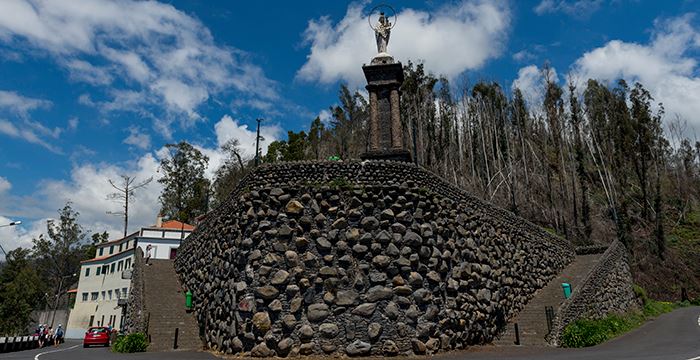
Shrine of Our Lady of Peace – in Terreiro da Luta, this is the largest monument in Madeira due to its statue of five meters tall marble. This was erected after the bombing of Funchal by German submarines in 1917, a promise that if the climate of peace was achieved, the population would erect a statue in honor of Senhora do Monte.

Fort St. James – built in the early seventeenth century, with the aim of defending the port of Funchal, this is a characteristic of a strong urban military architecture. Currently houses the Contemporary Art Museum and houses a restaurant, overlooking the sea. It is open Monday to Saturday from 10h00 to 12h30 and from 14h00 to 17h30.
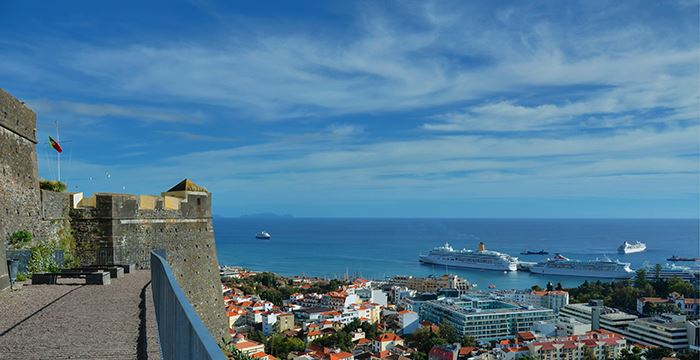
Fort Pico – St. John the Baptist – mand rise in the early seventeenth century, is part of a defensive system of Funchal, to prevent the pirates attacks. This is located in the parish of St. Peter, becoming one of the symbols of the island of Madeira. It was later occupied by the station Radio Telegraphic Funchal, now Radio Station Telegraph Naval do Funchal and was even recognized as Pico Radio. Today, the Portuguese Navy holds this place, housing a museum open room from Monday to Sunday from 9.00 to 18.00.
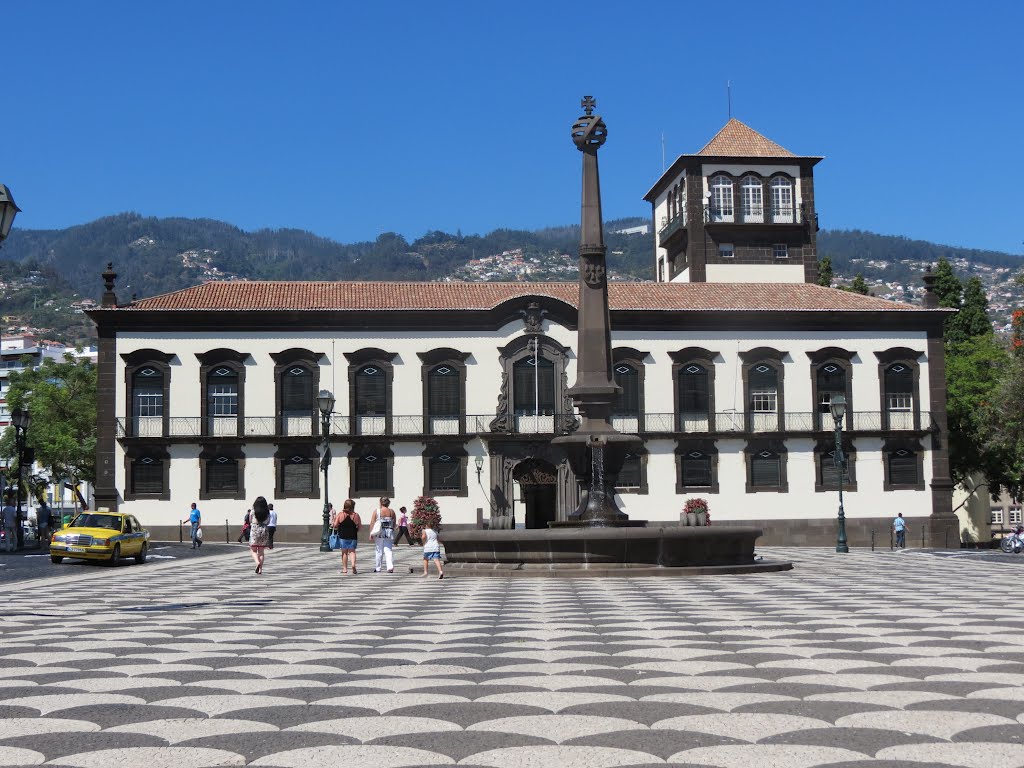
Funchal City Hall – the former residence of Count Carvalhal, a building with a final architecture of the eighteenth century, having been sent rise in 1758 by the Count of Carvalhal, with the goal of becoming his residence and later went through several owners and tenants. In the year 1883, it was acquired by the city of Funchal to serve as the Town Hall, adapting and changing over time. Contains a landscaped interior courtyard, coated Batisttini tile, executed in Maria de Portugal Factory in 1940, also has a fountain with a marble statue of “Leda and the Swan”, a work of Germano José Salles.
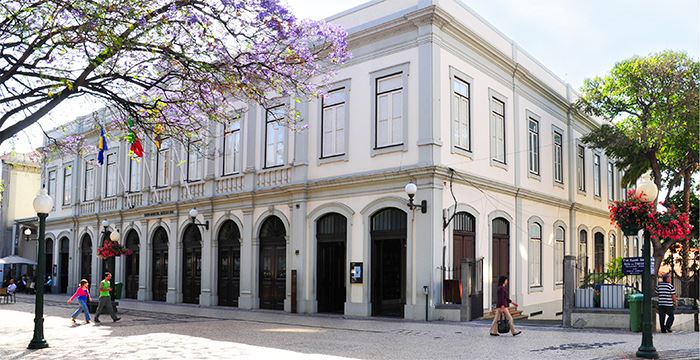
Municipal Theatre Baltazar Dias – Avenida Arriaga, this a century monument has a great architectural value and pays tribute to the blind playwright of Madeira, Baltazar Dias, playwright of the second half of the century. XVI, internationally known. Built in 1888, maintaining the architectural balance and decorated by Eugénio Cotrim’s Birth and the Italian Luigi Manini, famous painters in his time, including the ceilings are painted with decorative elements of the romantic era, the audience is surrounded by boxes with speakers masks Greek theater in gilded wood. This is open Monday to Sunday from 10.00 to 18.00.
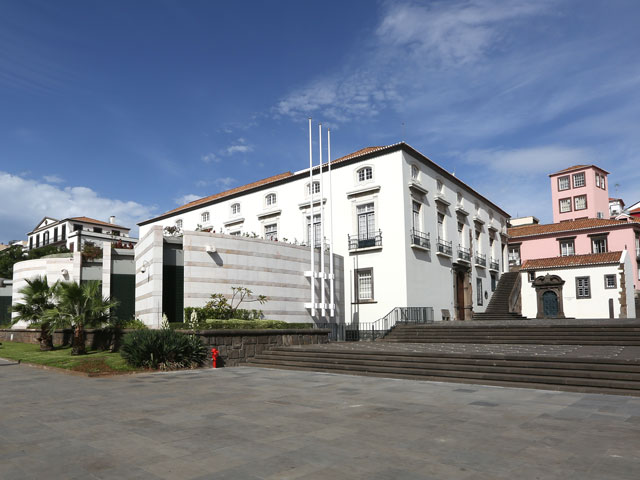
Madeira Regional Assembly – the former building of the Customs Funchal, which was built in 1519 by order of King Manuel I and is one of the finest architectural examples of the monarchic era, having suffered some changes and modifications throughout the seventeenth century and XVIII. In 1982, we started works to adapt so that it welcomes the Legislative Assembly of Madeira, these works were designed by architect Chorão Ramalho, being inaugurated in 1987.
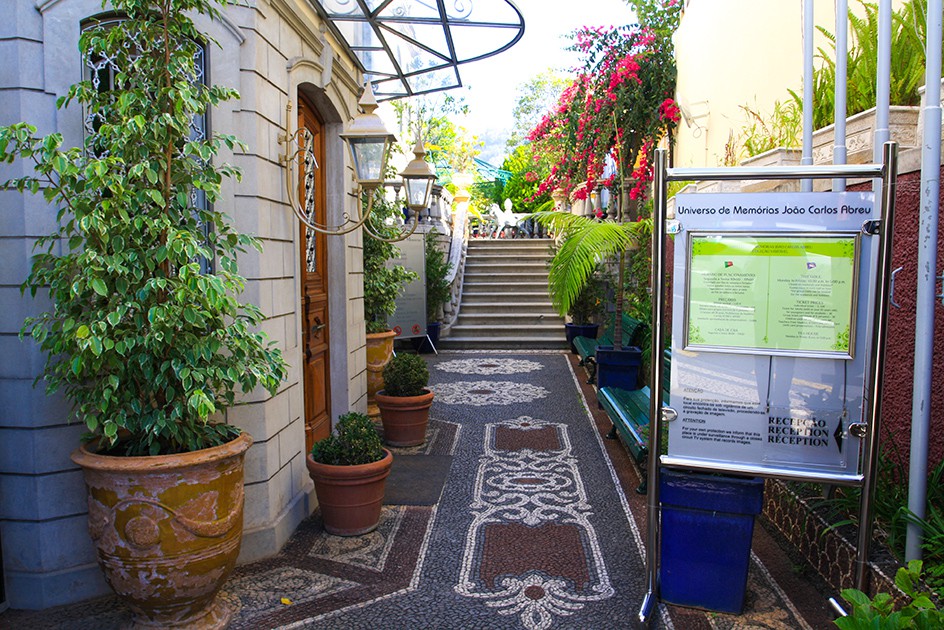
Civic and Cultural Center of Santa Clara “Universe of Memories” – features a collection of decorative arts obtained by the former Regional Secretary for Tourism and Culture, during his world travels. This is a nineteenth-century listed building and has become a repository of memories built by João Carlos Nunes Abreu, which is highlighted diverse collection of decorative arts from different continents and objects that are distributed in: Hall of Travel, Hall the Horse, the Room of Scene jewelry, Hall of Neckties and the House of Tea. This space is open Monday to Friday from 10h00 to 17h00, ending Saturday, Sunday and holiday.
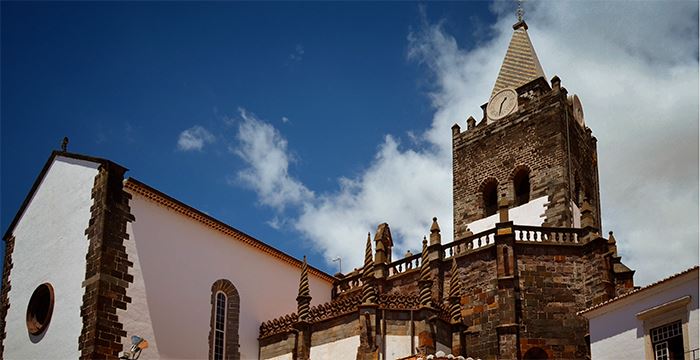
Cathedral – a National Monument since 1910, it is the main religious temple of the archipelago, with a historical, architectural and artistic value, especially the interior of the Cathedral, with the altarpiece of the main chapel, ordered by King Manuel I, surmounted by an over-sky gothic, it has the form of a polyptych composed of gilt and completed with sculptures of small and wood on oil paintings. Also recognized by its roof, one of the most beautiful in Portugal, this is made with wood from the island. But the stalls of the chancel of Flemish style, the main door is gothic, the gilded by the seventeenth century, the processional cross donated by King Manuel I make this temple a magical place. It is open Monday to Friday from 9h00 to 12h00 and from 16h00 to 17h30, Saturday from 17h00 to 19h00 and Sunday from 10h00 to 11h00 and 17h00 to 19h00.
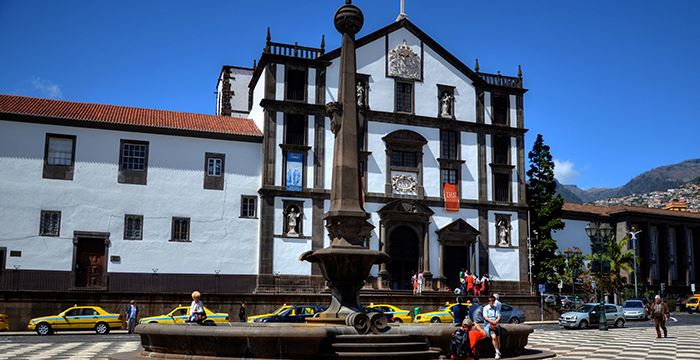
Church of St. John the Evangelist of the College – is one of the most beautiful monuments of the seventeenth century and a building that marks the transition from international mannerism to the Portuguese Baroque, lying in the parish of St. Peter, has a gilded seventeenth century, It is considered one of the most valuable pieces of Portuguese seventeenth-century carvings. Is open Monday to Friday from 10.00 to 18.00, Saturday from 15h00 to 18h00 and Sunday from 9:00 to 13:00 and from 18:30 to 20:30.
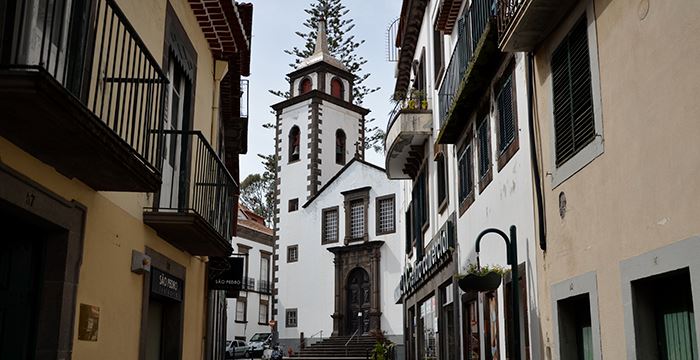
St. Peter’s Church – The Church of St. Peter, completed in 1743, features a remarkable collection of architectural and decorative elements from the seventeenth to the nineteenth century. This is a church dating from the sixteenth century that stands out for its mannerist door, pews, dated 1633, and the beautiful set of tiles of the seventeenth and eighteenth centuries. Your altars have carved end of the seventeenth century and the church is decorated with paintings, pieces of Jewellery and furniture from the XVII, XVIII, XIX and XX. The top of the bell tower of this church has a magnificent job in colored tiles. Opening hours: Saturday: 18:30, Sunday: 12:30; 4:00 pm
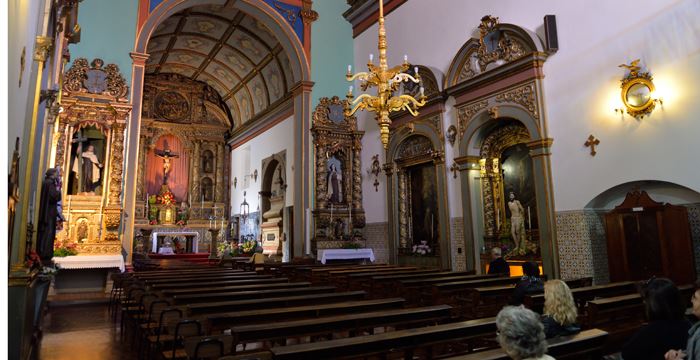
Carmo Church – built in the eighteenth century, contains a Mannerist and Baroque architecture, along with some pieces of sacred jewelery and imaginary .XVII the centuries and XVIII, where the walls are lined with tiles historian of the eighteenth century and a Baroque carving. It also highlights the filling of the chancel, one of the best Mannerist altarpieces island carvings and paintings of the ceilings dating back to the nineteenth century. Is open Monday to Saturday from 7h00 to 10h00 and from 16h00 to 18h30 and Sunday from 7.00am to 9.30am and from 12h00 to 18h00.
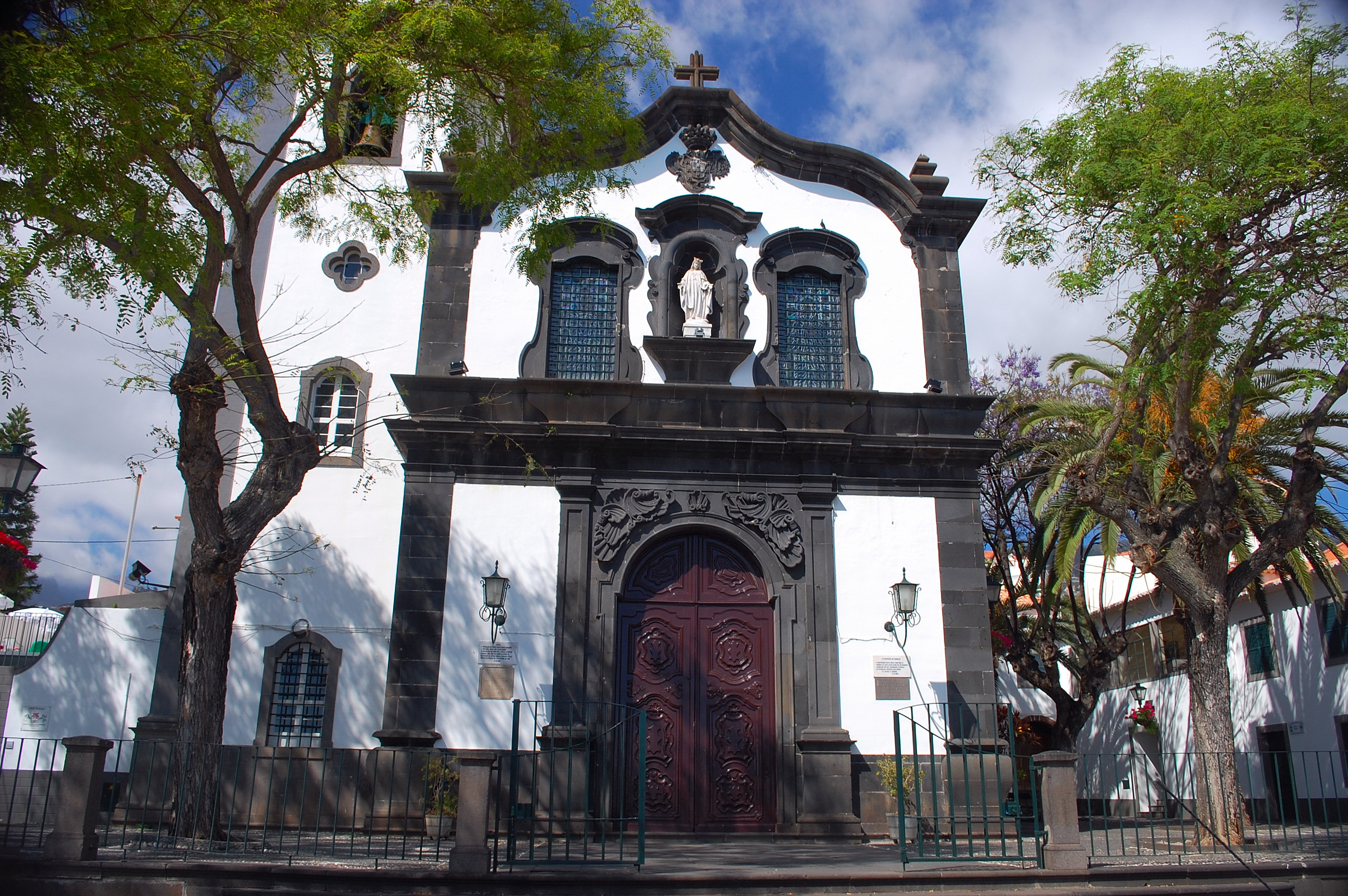
Socorro’s Church – St. James the Less – built in the eighteenth century, is part of one of the churches with a larger brand of baroque style, especially in its facade. Its construction is closely related to a vote of Funchal population in the year 1523, as a self-respecting to combat the outbreak of plague. In 1752, it was demolished and then built one larger church, completed only in 1768. This is open Saturday until 17:30 and Sunday from 9:00 am.
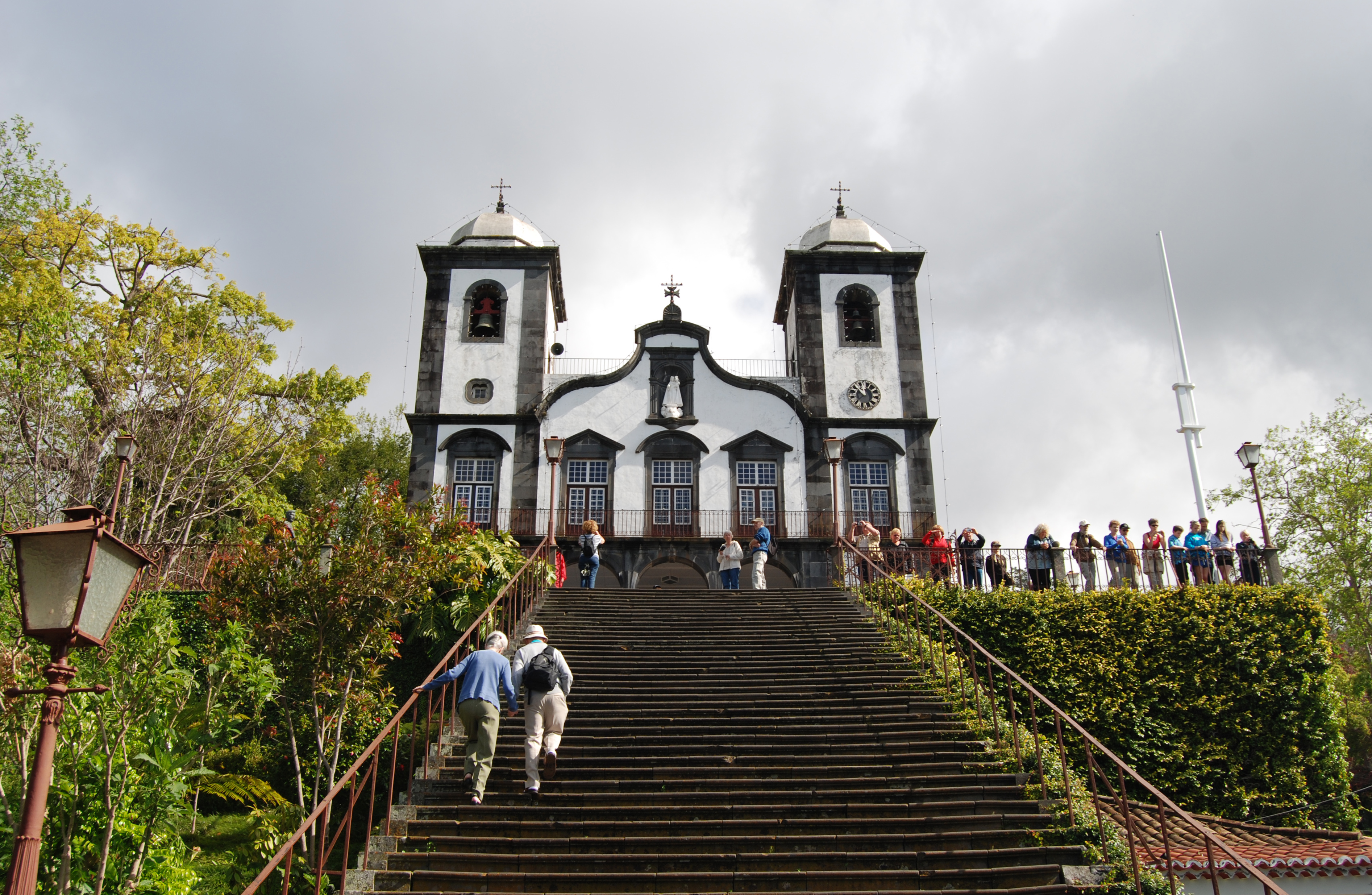
Igreja de Nossa Senhora do Monte – erguida no século XVIII, sobre uma ermida do século XV, com uma arquitetura setecentista e oitocentista, foi mandada construir por Adão Gonçalves, filho de Gonçalo Aires Ferreira, escudeiro do Infante e povoador da ilha. No ano de 1748, um forte terramoto deixou praticamente a igreja em ruínas, sendo reconstruida mais tarde em 1818. Na sua capela-mor está sepultado Carlos de Habsbourg, o último imperador da Áustria, da Hungria e da Boémia, exilado em 1921 na Madeira, enquanto no altar-mor está a imagem da padroeira, venerada desde o povoamento desta ilha. A 15 de agosto é celebrado o dia de Nossa Senhora do Monte, padroeira da Diocese e da cidade do Funchal. Esta igreja está aberta sábado até 18h00 e domingo das 8h00 às 18h00.
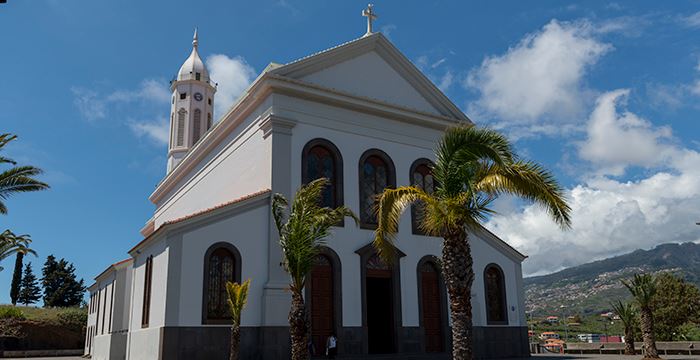
St. Martin Church – built in the first half of the eighteenth century, this contains three artistic panels associated with the Annunciation, Nativity, Santa Ana and San Joaquin. With increasing population, this was reformulated, and was completed in 1918. From the churchyard you can see a panoramic view of the surrounding countryside, going from the sea to the mountains. Opening its doors Monday to Friday until 18:00, Saturday until 19:00 and Sunday from 10h00 to 12h00.
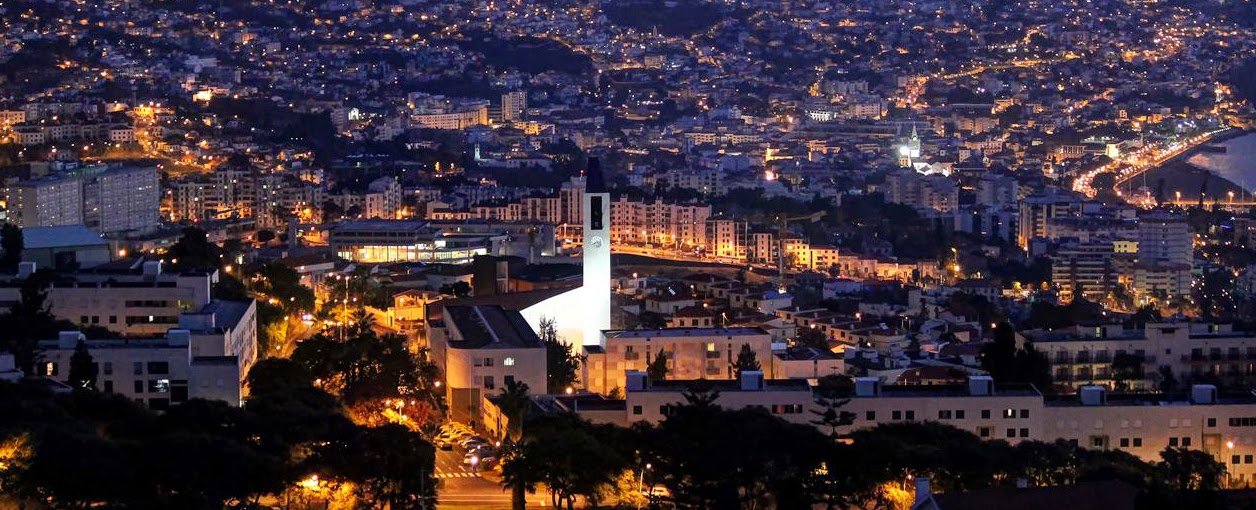
Church of Our Lady of Nazareth – one of the youngest churches of Funchal, was inaugurated in 2002, containing new and innovative lines, with a tower 44 meters high with four face: three white and closer glazed, and illuminated at night, by a line of light, visible at any point Funchal. Inside, there is a steel door and a set of pieces designed by architect John Walls, the Holy Water, the Baptismal Font, the tabernacle, the ambo and the altar, all carved in green marble. Opening its doors Monday to Friday until 19:00, Saturday until 19:00 and Sunday from 9:30 am to 11:30 am.
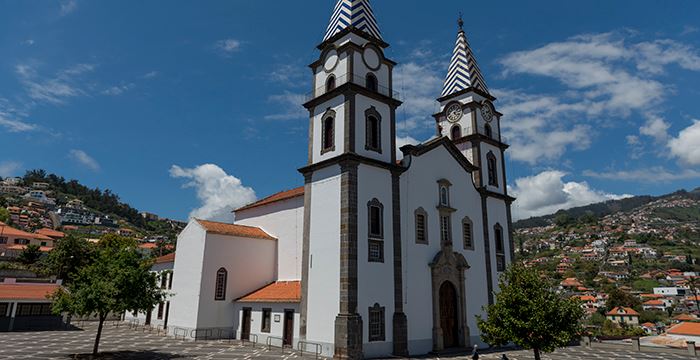
St. Anthony’s Church – built in 1789, this is presented in the Rococo style and is flanked by two tall bell towers, completed in 1883. This was built in the place that had been erected a chapel of the sixteenth century with the Saint Anthony’s patron saint. Between 1922 and 1928, this had remodeling work on which was placed a clock on a church tower. It is open on Tuesday, Wednesday, Friday and Saturday until 19:00, Wednesday opens at 8:30 am and Sunday from 9:00 to 11:00.
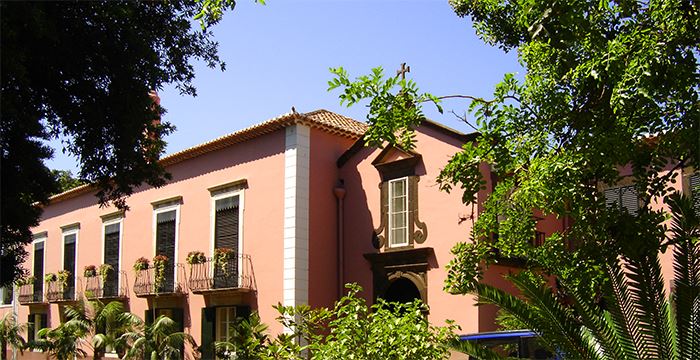
Chapel of Anguish – Quinta Vigia, this hosts a range of pieces of artistic interest, such as baroque paintings, sculptures and bas-reliefs, which highlights the tile panels that tell the “Fables de la Fontaine”, the century XIX. This is open Monday to Friday from 9:30 to 17:00 and closed on Sundays and holidays.
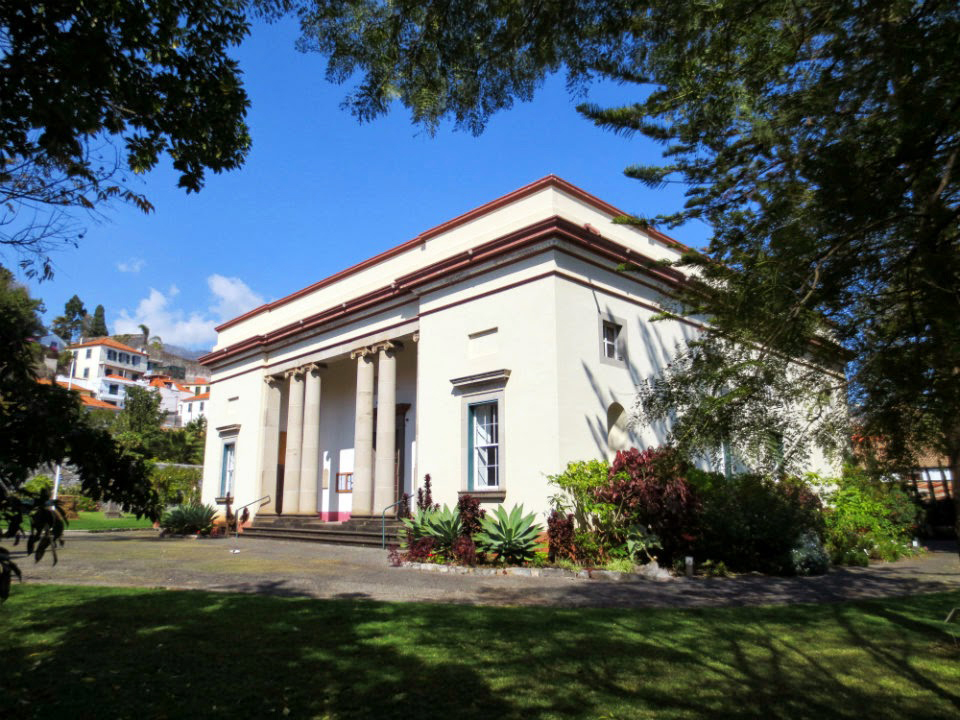
English church – dedicated to the Holy Trinity, it was built in 1820 to warrant the English consul Henry Veitch, a neoclassical style temple, inspired by the Florentine Renaissance, which highlights the existing gardens and sculptures, such as the bust of Queen Philippa of Lancaster, Teixeira Angels master authorship dated 1973, in bronze, with the tombs of notable personalities such as William Reid founder and owner of the hotel property Reids Palace Hotel. This temple is open Monday to Saturday from 8:45 am to 16:30 and Sunday opens at 11h00.
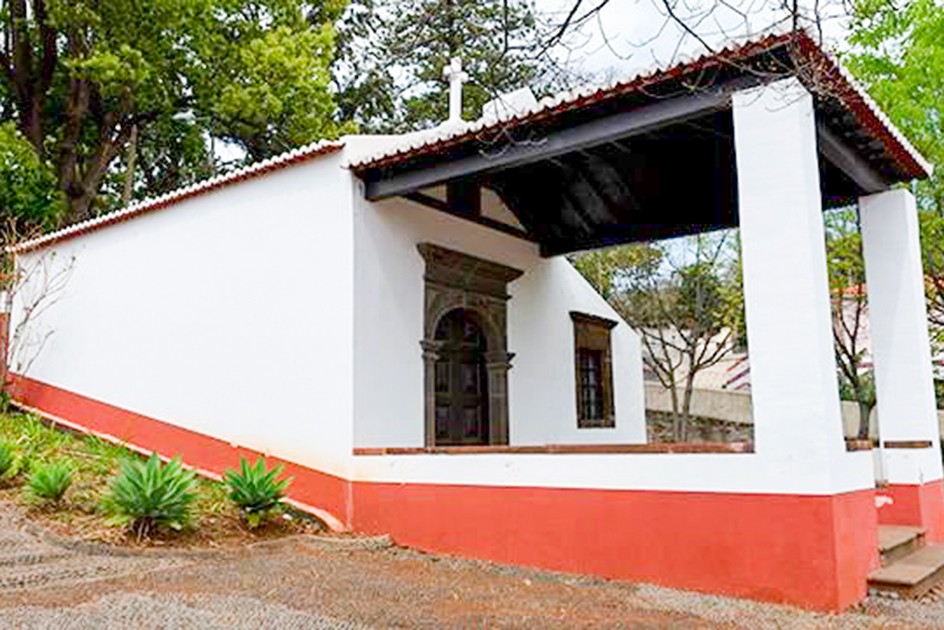
Chapel of Nazareth – in the parish of St. Martin, this was built by John Martim Vaz de Caires, in 1627, presenting a mannerist style, with a simple longitudinal plant, accompanied by a high-choir and sacristy adjoining the right elevation in which also stands Baroque carving specimens of the seventeenth century and a panel of Portuguese tiles, the eighteenth century.
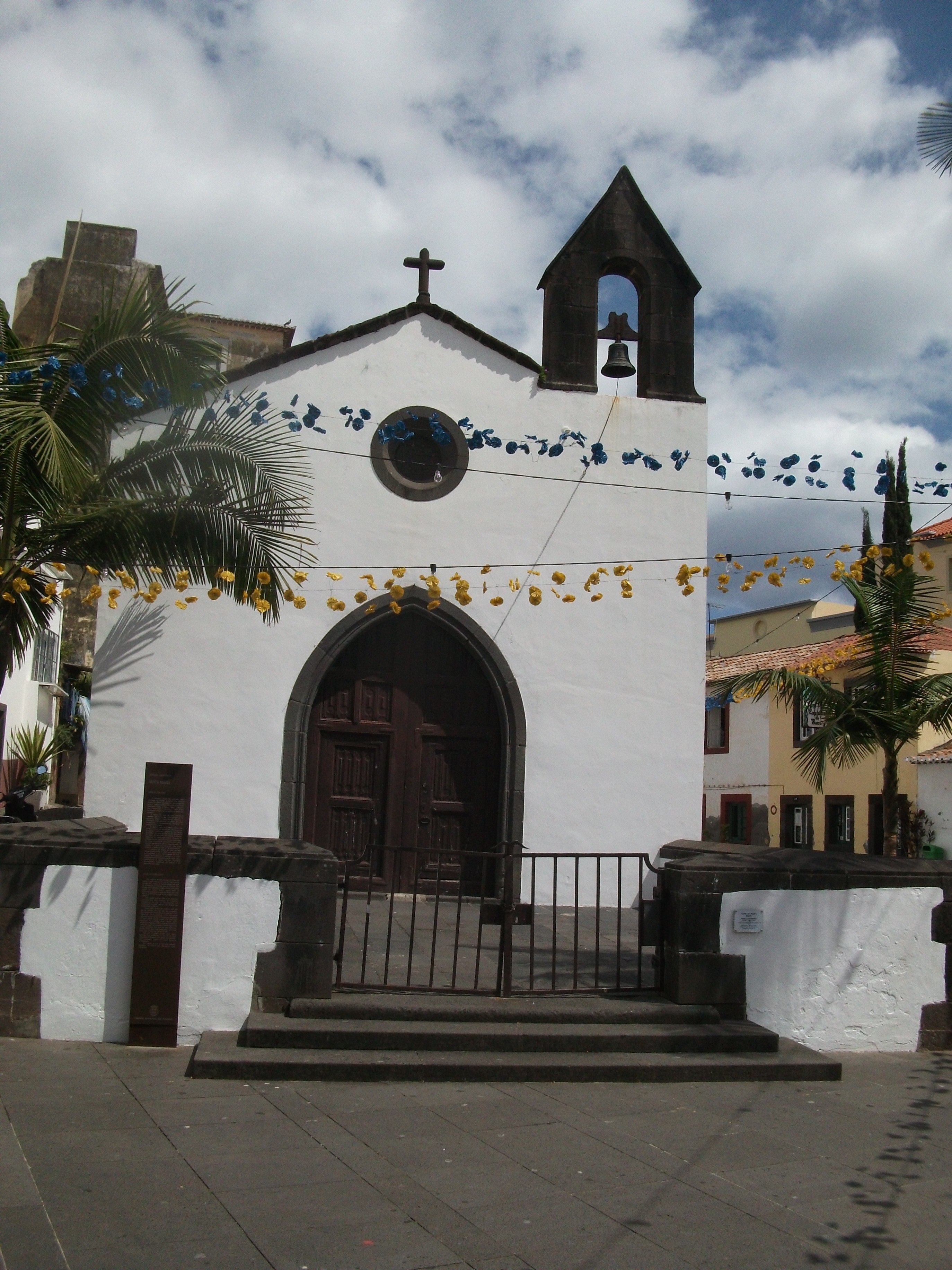
Chapel of the Holy Body – the result of the devotion of the town of fishermen, this presents a Gothic architecture and Mannerist the fifteenth century, which over time has been restructured. Since the chapel preserves its entirety from the late fifteenth century and its general lines date back to the sixteenth century.
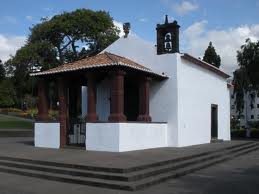
Chapel of Santa Catarina – erected in 1425, this was the first temple built in Madeira, presents with decorative elements of Manueline architecture, which makes it one of the most appreciable architectural monuments. This highlights are its arches, columns and domes of the sacred spider mite body along with his Cross of Christ, font carved in stone and the bell tower, which are remarkable elements of the sixteenth century.
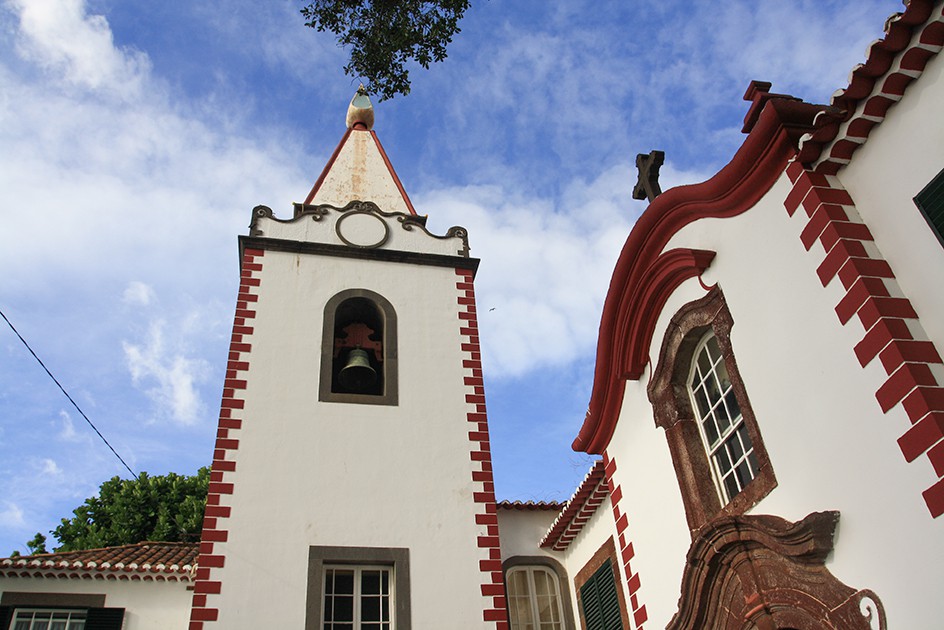
Chapel Penha de França – Rococo style, this rises from the fifteenth century and was rebuilt in 1712. First, it was a center of pilgrimage, with a house to welcome pilgrims and later became a resort summer bishops. In 1840, he lived here the Portuguese writer António Feliciano de Castilho. Today, this is under the guidance of the Franciscan Order, opening Saturday until 18:30 and Sunday from 11h30 to 12h30.



